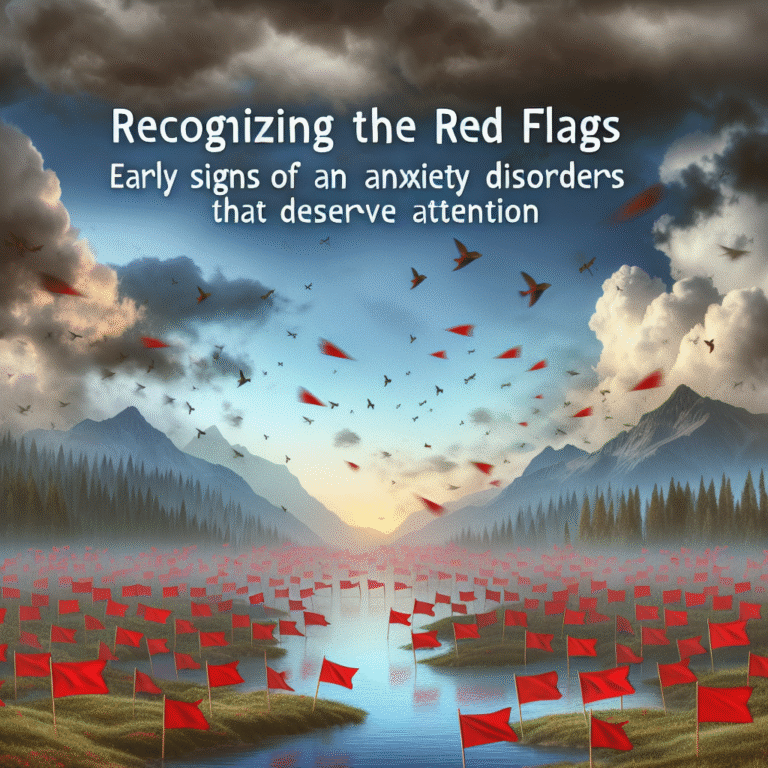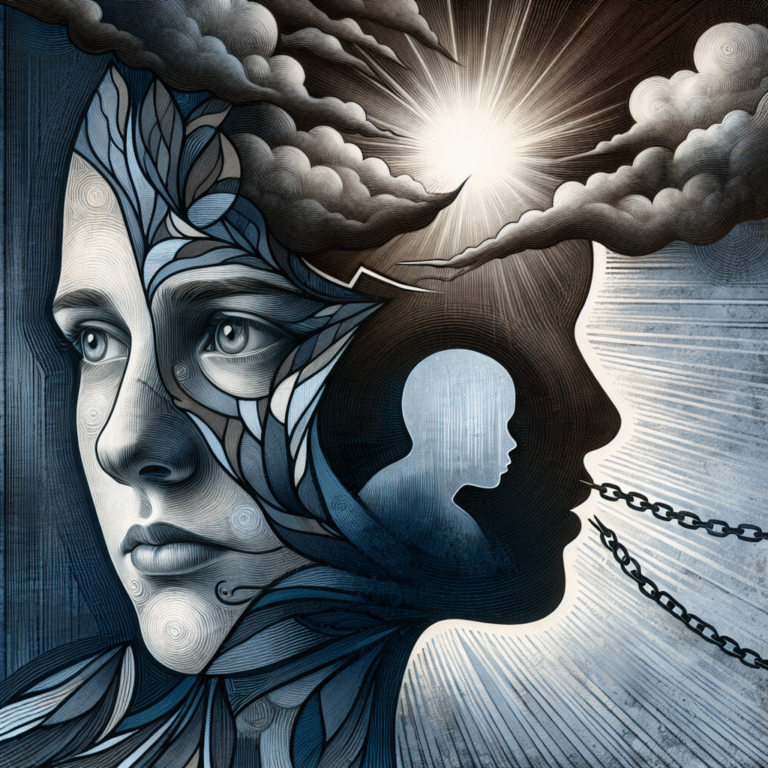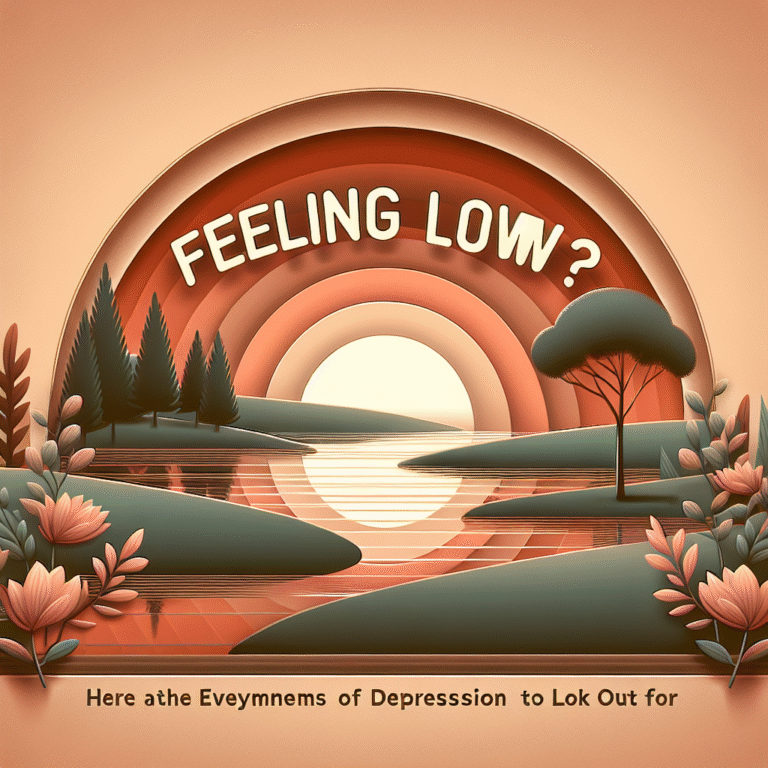
A Clearer Mind: Essential Techniques for Recognizing and Managing Bipolar Disorder Symptoms
Introduction
Bipolar disorder is often misunderstood, shrouded in stigma and misconceptions, yet it is a condition that affects millions of individuals globally. Those living with this disorder experience extreme mood swings, ranging from manic highs to debilitating lows. The journey towards achieving a clearer mind for individuals with bipolar disorder often centers around recognition and management of their symptoms. This article will explore powerful techniques for recognizing and managing bipolar disorder symptoms, providing unique insights to help individuals and their loved ones navigate this complex condition.
Understanding bipolar disorder is not just about recognizing its symptoms; it’s about embracing strategies that can lead to a healthier, more balanced life. Whether you, a family member, or a friend are facing the challenges of bipolar disorder, this guide will empower you with the knowledge and tools necessary for better mental health.
Understanding Bipolar Disorder
What is Bipolar Disorder?
Bipolar disorder is a mental health condition characterized by extreme mood swings that include emotional highs (mania or hypomania) and lows (depression). These fluctuations can disrupt daily life, affecting relationships, work, and overall quality of life. The importance of early recognition and appropriate management of these symptoms cannot be overstated.
Case Study: Recognizing the Signs
Case Study 1: Sarah, a 28-year-old graphic designer, experienced periods of intense productivity followed by times of deep depression. Initially dismissing her behavior as simply being "creative," she later recognized that she was cycling through manic and depressive episodes. With proper diagnosis and management strategies, she has found ways to stabilize her moods.
Analysis: This case highlights the importance of recognizing symptoms early. Sarah’s experience is reflective of many individuals with bipolar disorder who might initially chalk up their mood swings to standard emotional fluctuations. Timely intervention is crucial.
What Are the Symptoms?
Symptoms of bipolar disorder can vary widely between individuals and from episode to episode. They generally fall into two categories: manic and depressive symptoms.
| Manic Symptoms | Depressive Symptoms |
|---|---|
| Increased energy and activity | Sadness or hopelessness |
| Decreased need for sleep | Fatigue or loss of energy |
| Inflated self-esteem | Difficulty concentrating or making decisions |
| Engaging in high-risk behaviors | Feelings of worthlessness |
| Racing thoughts | Restlessness or slowed movements |
Recognizing these signs is a key component of achieving a clearer mind and fostering effective management of bipolar disorder symptoms.
Techniques for Recognizing Symptoms
1. Self-Monitoring
Engaging in regular self-monitoring can significantly aid individuals in recognizing mood changes over time. Keeping a mood journal can help identify triggers, patterns, and cycles in mood changes.
Tips for Effective Self-Monitoring:
- Record daily mood ratings on a scale of 1-10.
- Note any significant life events that may influence mood.
- Track sleep patterns and overall energy levels.
2. Engage in Psychoeducation
Understanding bipolar disorder empowers individuals to manage their symptoms effectively. Educating oneself about the condition can demystify the experience and reduce stigma.
Resources for Psychoeducation:
- Books about bipolar disorder from reputable sources.
- Support groups where individuals share experiences and coping strategies.
- Online resources from mental health organizations.
Case Study 2: Tom, a 35-year-old teacher, benefited greatly from a support group focused on psychoeducation. Learning about the triggers of his manic episodes allowed him to implement coping strategies like establishing a consistent routine, reducing stress, and communicating openly with his family.
Analysis: Tom’s experience illustrates the shifts in self-awareness that can occur through education. Connecting with others dealing with similar issues can enhance understanding and empathy.
3. Identifying Triggers
Recognizing personal triggers—both internal and external—can contribute significantly to managing bipolar disorder symptoms. Triggers may include stress, changing seasons, or significant life events.
Common Triggers:
- High-stress environments
- Substance abuse
- Lack of sleep
- Change in routine
4. Utilizing Mood Charts
Mood charts can provide a visual representation of mood fluctuations over time. By tracking mood alongside triggers and interventions, individuals can find patterns and make informed decisions about their management strategies.
| Week | Mood Score | Trigger Noted | Intervention Used |
|---|---|---|---|
| 1 | 8 | Stress from work | Meditation and deep breathing |
| 2 | 3 | Family conflict | Counseling session |
| 3 | 6 | Medication adjustment | Regular check-ins |
5. Engaging Professional Help
Working with mental health professionals, such as psychologists or psychiatrists, is essential for accurate diagnosis and treatment. Cognitive Behavioral Therapy (CBT) and medication can be effective in stabilizing mood swings.
Case Study 3: Professional Insight
Case Study 3: Maria, a 40-year-old marketing executive, experienced severe mood swings and sought professional help after a manic episode led to impulsive financial decisions. With therapy and mood-stabilizing medication, she learned coping techniques that helped normalize her life.
Analysis: This case emphasizes the role of professional intervention in managing bipolar disorder. Some individuals may require a combination of therapies tailored to their needs for optimal management.
Techniques for Managing Symptoms
1. Establishing Routines
Creating a daily routine can provide structure, which is vital for individuals with bipolar disorder. Consistency in daily activities, from sleep patterns to meals, can help stabilize mood.
2. Mindfulness and Meditation
Practicing mindfulness and meditation can increase emotional awareness and reduce stress. Techniques such as deep breathing, yoga, or guided meditation can enhance mental clarity and improve emotional regulation.
3. Physical Activity
Regular exercise is a powerful tool for managing mood and reducing anxiety. Physical activity releases endorphins, which can improve mood, enhance energy levels, and promote better sleep.
4. Healthy Lifestyle Choices
Nourishing the body with a balanced diet, adequate rest, and hydration can significantly impact emotional well-being. Limiting caffeine and sugar, as well as avoiding alcohol and drugs, can further stabilize mood.
5. Building a Support Network
Maintaining a strong support network consisting of family, friends, and mental health professionals is crucial for emotional stability. Open communication regarding one’s struggles can foster understanding and compassion within relationships.
Case Study 4: The Power of Community
Case Study 4: Josh, a 29-year-old software developer, found that having a close-knit group of friends who understood his condition tremendously improved his journey. Their support provided him with accountability during challenging times while also celebrating his achievements.
Analysis: This case showcases the significant positive impact of a robust support network. Social connections can serve as protective factors against mood episodes.
Conclusion
Recognizing and managing bipolar disorder symptoms is a continuous journey that requires patience, education, and effective techniques. The insights provided throughout this article aim to empower individuals and families, fostering a clearer mind for better mental health outcomes.
By employing self-monitoring, engaging in psychoeducation, identifying personal triggers, and utilizing professional help, individuals can find their path toward stability and fulfillment. It’s essential to remember that while the journey may be fraught with challenges, the application of these techniques can lead to remarkable improvement in quality of life.
FAQs
1. What are the first signs of bipolar disorder?
The initial signs may include noticeable shifts in mood, energy levels, and activity levels, often misattributed to personality traits or life circumstances.
2. Can bipolar disorder be cured?
Bipolar disorder is a lifelong condition that can be managed effectively with proper treatment. While symptoms can be controlled, there is currently no cure.
3. What treatments are available for bipolar disorder?
Treatment options include medication (mood stabilizers, antipsychotics), psychotherapy (CBT, family therapy), and lifestyle changes (regular exercise, healthy diet).
4. How can loved ones support someone with bipolar disorder?
Educating themselves about the condition, maintaining open lines of communication, and encouraging treatment adherence can significantly aid someone managing bipolar disorder.
5. What should I do if I or someone I know is in crisis?
In a crisis situation, immediate assistance should be sought. Contact a mental health professional, call local emergency services, or reach out to crisis hotlines for support.
By taking proactive steps, individuals can lead more balanced lives, embracing the journey toward a clearer mind through the techniques outlined in this article. Your mental health matters and the path to managing bipolar disorder starts with the decisions you make today.
















